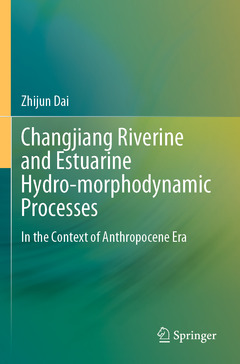Changjiang Riverine and Estuarine Hydro-morphodynamic Processes, 1st ed. 2021 In the Context of Anthropocene Era
Auteur : Dai Zhijun

Thoroughly analyzes the morphodynamics of Asia’s longest river from the perspective of the Anthropocene
Systematically illustrates how the Changjiang River estuary responds to strong human activities and natural forcing changes
Demonstrates the distinct lake accretion/erosion and lacustrine delta evolution mechanism along the Changjiang River that are different from the other river systems of the world
Analyzes the sediment source -to -sink shift along the Changjiang River system from upstream to estuary and their coupling regimes with the channel
Brings forward unique morphodyanmic variation pattern of estuarine channels in response to different forcing
Date de parution : 08-2022
Ouvrage de 358 p.
15.5x23.5 cm
Date de parution : 08-2021
Ouvrage de 358 p.
15.5x23.5 cm



